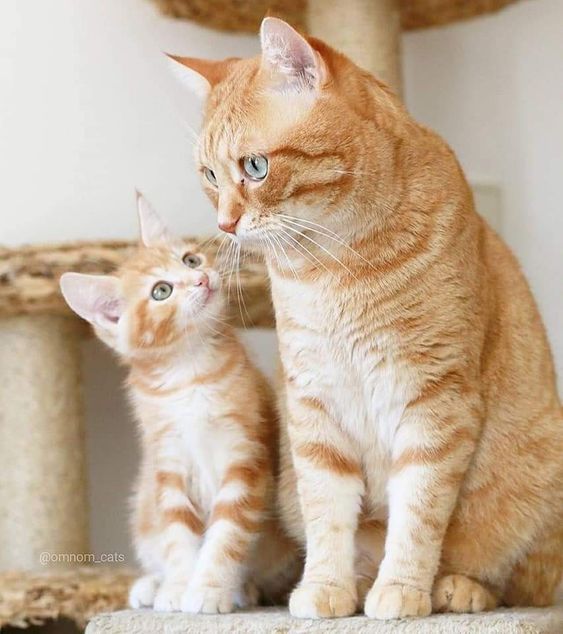
Cats are beloved for their independence, elegance, and enigmatic charm. Beyond the solitary image often associated with them, cats have complex family structures and social dynamics. This article explores the intriguing world of feline families, from the birth of kittens to their interactions within both wild and domestic settings.

Birth and Early Development
The life of a cat family begins with the arrival of kittens, tiny and vulnerable:
- Newborn Stage: Kittens are born blind and deaf, relying entirely on their mother for warmth, nourishment, and protection.
- Mother’s Role: The queen, or mother cat, is intensely devoted, feeding her kittens and keeping them clean and warm by licking them.
The First Few Weeks
Kittens undergo significant development during their first weeks of life:
- Sensory Awakening: Around two weeks old, kittens open their eyes and ears, starting to explore their immediate environment.
- Physical Development: They begin to crawl, play with their siblings, and develop the skills necessary for survival.

Weaning and Growing Independence
As kittens grow, they gradually become more independent:
- Transition to Solid Food: By six to eight weeks, kittens start to eat solid food, although they continue to nurse intermittently.
- Social Learning: Play becomes an important activity, helping kittens learn hunting techniques and social behaviors from their mother and siblings.
The Role of the Father
The role of male cats, or toms, varies in the wild and domestic settings:
- Protective Role: In some feral colonies, toms may protect the kittens and their mother from threats.
- Minimal Involvement: More commonly, toms do not engage in raising kittens, leaving all parental duties to the queen.
Feral Colonies and Social Structure

Feral cat colonies offer a glimpse into the natural social structure of cats:
- Matriarchal Society: These colonies are often led by a dominant female, with related females and their offspring forming close-knit groups.
- Cooperative Rearing: Queens may assist each other with nursing and protecting kittens, enhancing the survival rate of the young.
- Territorial Behavior: Cats in colonies establish and defend territories, using scent markings and vocalizations to communicate.
Communication and Interaction
Communication within cat families is rich and varied:
- Vocalizations: Cats use a range of sounds, from purring and meowing to growling and hissing, to express their needs and emotions.
- Body Language: Tail movements, ear positions, and facial expressions convey complex messages.
- Scent Marking: Cats use scent glands located on their face, paws, and tail to mark their territory and identify each other.
Domestic Cat Families
In domestic environments, the dynamics of cat families can be equally fascinating:
- Human Interaction: Domestic cats often see their human caretakers as part of their family, showing affection through purring, head-butting, and following them around.
- Socialization: Kittens raised with positive human interaction are typically more sociable and confident.
- Environmental Enrichment: Providing toys, scratching posts, and interactive play helps domestic cats stay healthy and stimulated.
Responsibilities of Cat Owners
Caring for a cat family involves numerous responsibilities:
- Health Care: Regular veterinary visits, vaccinations, and spaying or neutering are crucial for preventing diseases and managing the cat population.
- Nutrition: Providing a balanced diet is essential for the growth and health of both kittens and adult cats.
- Safe Living Conditions: Ensuring a safe, clean, and stimulating environment is vital for the well-being of cats.
The secret lives of cat families reveal a world of nurturing, social learning, and complex interactions. Whether in the wild or as cherished members of our homes, cats exhibit fascinating behaviors and form strong bonds with their families. Understanding these dynamics enhances our appreciation of these remarkable animals and enriches the relationship we share with them.

